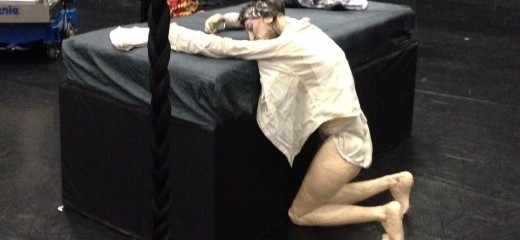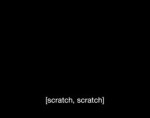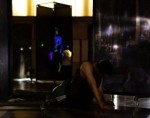
Beyond Performance—The Art in the Sausage Making
by Ellen Chenoweth
We live in a cynical culture in a fraught moment. We suspect our heroes have clay feet. That our elected leaders are often corrupt or do not have our best interests at heart. Even institutions with a veneer of neutrality such as the IRS or the Census Bureau now seem to be deeply dubious. It’s enough to drag a person down and stifle the spirit.
I’ve been finding solace in the performing arts. In watching performances in a darkened theater, of course, but also in finding moments of congruity between the values presented on stage and what is happening behind the scenes. It’s heartening to experience that sometimes seeing how the sausage gets made actually makes the sausage more delicious.
A few months ago, the performing arts venue where I work hosted a production from French-Norwegian puppet company Plexus Polaire. The performance, Chambre noire, looked at the life and death of radical feminist Valerie Solanas, with two performers weaving a devastating world around her narrative. I saw the show twice and it caused me to re-evaluate my attitude towards Solanas, made me feel for what I thought was a deeply unsympathetic character, and astonished me with the skillful manipulation of a life-like puppet.
But the real show-stopper happened for me during the strike of the show, as the company technicians were packing props away and taking everything down. Chambre noire used a number of curtains composed of long, thick strands of fabric, the kind you might duck through into a fortune teller’s lair, but without the beads. To pack up these curtains, highly efficient female crew members were rapidly braiding the strands together, leaving long, thick braids hanging around the stage. It was simple, stunning, and beautiful. I was floored seeing these young women engage in a feminine act of caretaking just minutes after the performance ended, like a surprise encore that the performers weren’t even aware of. It felt like the continuation of the homage to Valerie Solanas to have these braids suspended around the stage.
If performances we put on are like trees, then there are all these intricate root systems underneath the ground that we never talk about. These invisible constructions for nourishment can sometimes be the most dazzling parts of our ecosystems.
In 2017, Pig Iron Theatre Company created a massive show called A Period of Animate Existence, which premiered at the FringeArts Festival. At the time of the work’s development, I was Pig Iron’s Marketing and Development Director, a position which meant I was copied on the rehearsal reports. The Production Stage Manager, Flora Vassar, would send wonderfully clear and evocative notes documenting an extraordinary creative process, with a multi-generational cast of over 100 people, including instrumentalists, wrestlers, a choir, actors, community members, and many more.
The notes would include lines such as:
“Sound would like volcano song notes to be a priority for the kids.”
“Mary wants to use her personal cane for the interlude.”
“Ask Abby to pick up Margalit’s wings on her way out after the flower song.”
“We distributed earplugs to worms as needed I believe. Did they use them?”
These details, and thousands of others like them, documented over the course of months, became an archive of the show’s development, only to be seen by those involved in the process. I was entranced by the show, but I was also completely delighted by the rehearsal reports. The public record of A Period of Animate Existence gets only an abbreviated 450-word review or two. The relationships, the conversations, the arguments, the sketches, the rehearsal reports only live in memories or private archives.
As a writer, I champion the right of critics to bring their hardest-hitting critiques to a performance, but I wonder about all that is missed when our critics, our funders, and oftentimes we artists and administrators who should know better, only talk about the aspects of performance that are the easiest to see. What’s on stage is important, naturally, but let’s also talk about the rehearsal reports that read like poetry. The community that is sometimes built backstage. The stage manager who is so good at her job it’s like watching a social practice artwork unfold.
Jess Conda, a bright light of a performer in Philadelphia theater, recently posted on Facebook after wrapping up a show at Plays and Players, “Strike is Art. The curtain is literally coming down and you can still feel the fresh vibrations of the audience energy. Thinking of all the shows that have vibrated this historic and important theater space.” I want to honor these moments and others like them, often invisible or under-recognized.
There’s something profoundly reassuring when the inner workings match the exterior façade; when the work behind the scenes is as brilliant as the work on the stage; when someone who is generous and kind in their on-stage performances is even more so backstage. Let’s celebrate and use these moments to fuel our work forward and keep our spirits afloat.
Note: Pig Iron Theatre Company’s latest work, A Hard Time, is currently running May 1-12 at FringeArts, co-created by Jess Conda, Jenn Kidwell, and Mel Krodman.
By Ellen Chenoweth
May 7, 2019









